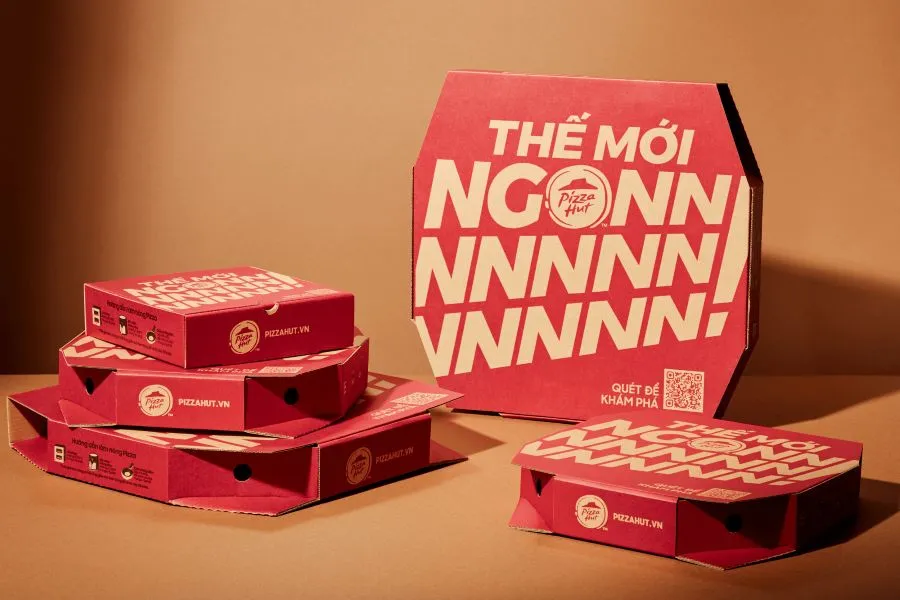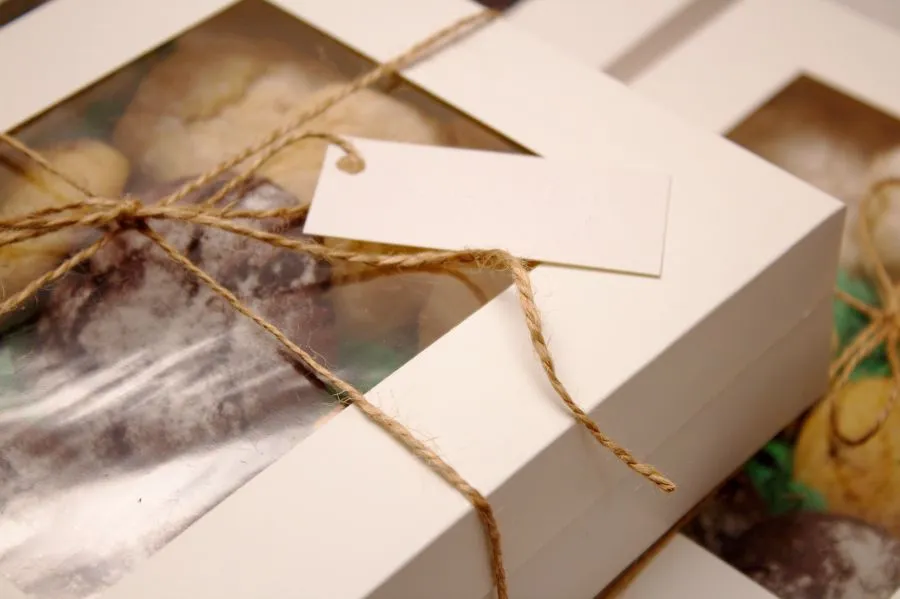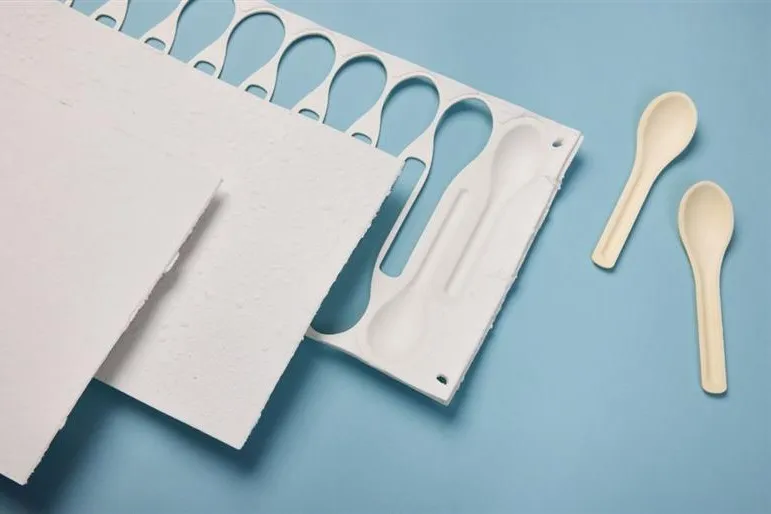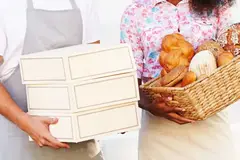Food industry rethinks sustainable bakery packaging formats amid delivery boom
Key takeaways
- Pizza Hut Vietnam, under Jardine Restaurant Group, introduced a hexagonal pizza box to protect pizzas during motorbike delivery while cutting plastic use.
- Fiberdom developed home-compostable trays and plates using natural ingredients, without any fossil polymers or synthetic adhesives.
- Plastic still dominates bakery packaging at 74%, but alternatives are growing. Folded boxes rose 28% in the last year, according to Innova Market Insights.
Bakery packaging is increasingly shaped by what consumers order and how effectively products support delivery and disposal. The pursuit of performance and sustainability is fueling packaging innovation in the food industry.
Packaging Insights explores front-line developments in the bakery packaging industry with Fiberdom, Jardine Restaurant Group, and Innova Market Insights.
Antony Leung, managing director of Pizza Hut at Jardine Restaurant Group, points out that as takeout and food delivery are gaining popularity globally, packaging must deliver on three essentials: convenience, quality, and customer experience.
To meet consumer demands, Pizza Hut Vietnam, operated by Jardine Restaurant Group, has introduced an eco-friendly hexagonal pizza box design.
“The decision for Pizza Hut Vietnam to adopt a hexagonal pizza box was rooted in the country’s strong delivery-by-bike culture, where secure transport and presentation of pizzas are especially important. The new design is sturdier, better sized to fit all pizza ranges, and eliminates the need for extra plastic components,” he tells us.
 The hexagonal box design is said to reduce over 6,000 kg of annual single-use plastic, previously used to prevent collapse during stacking (Image credit: Jardine Restaurant Group).Design for food delivery
The hexagonal box design is said to reduce over 6,000 kg of annual single-use plastic, previously used to prevent collapse during stacking (Image credit: Jardine Restaurant Group).Design for food delivery
Leung shares that the hexagonal packaging concept was inspired by Pizza Hut Taiwan, where a similar design was introduced in 2022 to reduce plastic use.
“With the rise of delivery orders — often on bikes over long distances — the team sought an innovative packaging solution to ensure that pizzas with cheese‑stuffed or multilayered crusts, along with their toppings, stayed securely in place throughout transit,” he says.
“The Taiwan team worked closely with suppliers to refine material thickness and folding techniques, resulting in a box that consumed less paper, supported pizzas’ weight without plastic, and could be safely stacked up to four high — all clear improvements over the previous square format.”
Leung emphasizes that the hexagonal box is more compact and designed to provide greater reliability for delivery riders. The pizza packaging is designed with ventilation holes to prevent steam build-up and keep crusts crisp.
According to data from global market researcher Innova Market Insights, folded boxes for baked goods have increased by 28% over the past year, ranking as the second-highest growth among packaging types, after flat pouches.
This year, Smurfit Westrock designed a pizza box for Papa John’s that can hold three medium pizzas. The top of the pizza box folds out to create a mini football goal or basketball hoop, creating an engaging experience for customers.
Reducing plastic waste Companies are pushing for more recyclable and engaging packaging formats.
Companies are pushing for more recyclable and engaging packaging formats.
According to Innova Market Insights’ trend analysis, plastic is the dominant bakery packaging material at 74%, followed by carton at 19%, and folded boxes at 16%.
Tomi Järvenpää, general manager at Fiberdom, says: “Manufacturers are under growing pressure to replace non-essential plastics — but to move from niche to scale, they need alternatives that come close to plastic in performance and cost.”
Leung echoes the trend, as the industry is seeking solutions that can tackle plastic packaging waste from bakery products.
“The key lies in balancing material choice with smart design. By replacing plastic lid supports with FSC-certified paperboard, Pizza Hut Vietnam has significantly reduced unnecessary plastic use,” shares Leung. He notes that the packaging uses eco-friendly inks to lower its overall environmental footprint.
Last year, Mondi partnered with Welton, Bibby and Baron, a packaging supplier to the UK food and FMCG markets, to introduce recyclable paper-based bread bags. Similar to plastic packaging, the paper bags have windows so that consumers can see the bread inside.
Meanwhile, Amcor launched its AmPrima Flowpack Pro solution for flatbread and packed pastry. The monomaterial is said to be recycle-ready and aims to help overcome the bakery sector’s reliance on non-recyclable packaging.
Transition in material
Fiberdom aims to cater to the bakery and food service sector with home-compostable trays and plates that mimic the durability of plastic. Järvenpää explains that the key development lies in how the Finnish company functionalizes the fibers.
 Fiberdom says its smarter material can deliver durability without plastic (Image credit: Fiberdom).“Our patented process creates strength, durability, formability, and resistance to humidity using only natural ingredients. No fossil polymers. No synthetic adhesives. Achieving this level of performance without any additives is a big deal. We’re essentially replicating the strength and flexibility of plastic using clean, natural inputs,” he says.
Fiberdom says its smarter material can deliver durability without plastic (Image credit: Fiberdom).“Our patented process creates strength, durability, formability, and resistance to humidity using only natural ingredients. No fossil polymers. No synthetic adhesives. Achieving this level of performance without any additives is a big deal. We’re essentially replicating the strength and flexibility of plastic using clean, natural inputs,” he says.
“Many of the bioplastics come from plants, but they’re chemically modified polymers that often require high-temperature industrial composting. That infrastructure isn’t universally available, and even where it is, these materials can contaminate recycling streams. Just because something is labeled ‘bio’ doesn’t mean it’s circular or practical.”
“That’s where we’re different. Fiberdom breaks down naturally and fits into the systems people already use — biowaste bins, backyard compost heaps, and standard cardboard recycling. That clarity makes true circularity possible.”
Jardine Restaurant Group is prioritizing securing certified materials in the Asian market. “As one of the first quick service restaurant brands in Vietnam to adopt FSC-certified packaging at scale, Pizza Hut is committed to sourcing compliant materials, though the process has been challenging,” says Leung.
“The wider supply chain was still developing access to certified materials, and our supplier was using new die-cutting technology for this shape. Developing the right prototype required additional rounds of refinement to balance strength and sustainability.”
To overcome the challenge, Jardine Restaurant Group collaborates with its supplier, enabling the company to negotiate more flexible terms and establish a reliable supply chain to support packaging transformation.











